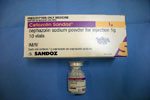The Patient
Unit 6: Intraoperative Considerations
Topic 3: Role of Antibiotics in Surgery
Antibiotic therapy may be prophylactic or therapeutic. Prophylactic therapy is employed to prevent the establishment of infection in circumstances where the risk is high or where infection would be catastrophic. Antibiotics are only effective against microbes, usually bacterial, and therefore will not alleviate clinical signs due to causes other than microbial infections. Inflammation, necrosis, immune-mediated conditions, response to physical trauma and neoplasia can mimic the signs of infection.

Antibiotics are not a substitute for asepsis, gentle handling of tissues, preservation of blood supply, meticulous haemostasis, judicious use of suture materials and accurate apposition of tissues.
Antibiotic Prophylaxis`
By definition, this is the administration of an antibiotic before contamination or infection of the surgical site. There is a lag between peak plasma and surgical wound fluid concentrations which equilibrate about 30 minutes after administration. Antibiotics administered 3 to 6 hours after contamination has no benefit in preventing infection.
The selection of a prophylactic antibiotic is usually empirical based on the most likely organisms to contaminate the surgical site. For example, in most clean orthopaedic procedures, S. aureus is the most common skin contaminant while lower gastrointestinal tract surgery is usually contaminated by coliforms and anaerobes.

Cephazolin, a first generation cephalosporin which has excellent efficacy against coagulase-positive staphylococci and E. coli, is the prophylactic antibiotic of choice for most veterinary surgeons. It also has low toxicity, is cost effective, and a prolonged duration of activity.
The frequency of readministration for prophylaxis is aimed at maintaining adequate tissue levels throughout the surgical procedure. Current human recommendation for the timing of additional intra-operative administration is 1 to 2 times the elimination half-life of the drug.
For cephazolin administered at a dose of 22mg/kg, the recommended frequency of readministration is every 3 hours for surgical procedures in dogs. However it is common practice in veterinary medicine for cephazolin to be repeated every 90 minutes in orthopaedic procedures and every 2 hours in soft tissue procedures. The rationale for this more frequent administration has not been identified.
The duration of antibiotic prophylaxis is unknown. Clinical trials in humans undergoing surgery showed no difference in wound infection rate between those who had received antibiotics for the first 24 hours and those who received a 5-day course of post-operative antibiotic.
